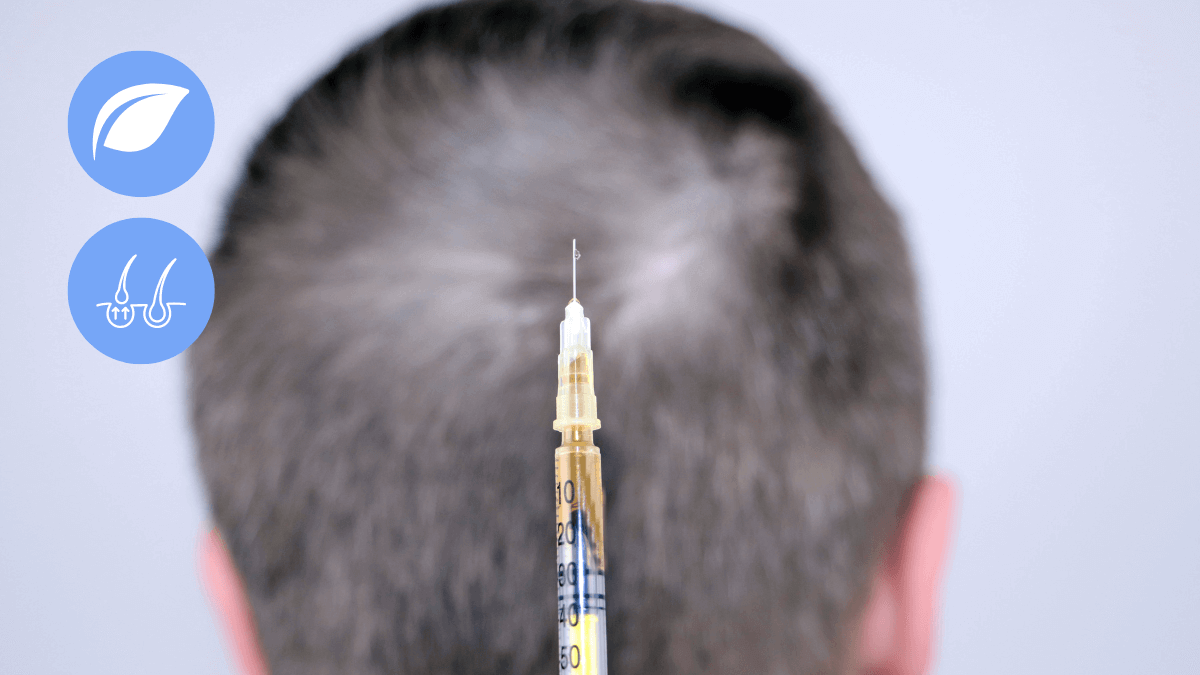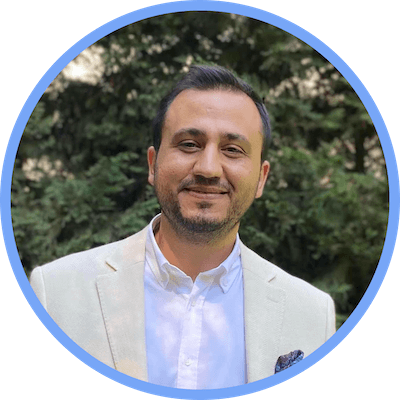TL;DR
➡ The most prominent surgical alternatives to hair transplants for treating hair loss are PRP injections, laser caps, and LLLT.
➡ Top medical alternatives to hair transplants are Finasteride, Minoxidil, and saw palmetto.
➡ Even the most powerful alternatives to hair transplants do not have the same effectiveness in treating advanced baldness. They are most helpful for slowing down hair loss.
➡ Some natural remedies and practices to use with or instead of hair transplants are aloe vera, scalp massages, avocado oil, and rosemary oil.
With their high success rate, hair transplants are becoming more popular daily. They are an excellent solution for people with MPB in its late stages, but there are several reasons why some patients may feel discouraged from choosing this method.
For example, hair transplants are not cheap, the surgery creates a challenging mental and physical weight, and there is no guarantee that hair loss won’t continue after the treatment.
When all of these are combined, some patients prefer to look for alternatives that can produce highly successful results. So we decided to give you your best and clinically-proven options as alternatives for hair transplants.
In this article, I will go through all of these options one by one, describe them and explain how they are applied or how effective they are when we compare them to hair transplants:
Table of Contents
Medical Therapies
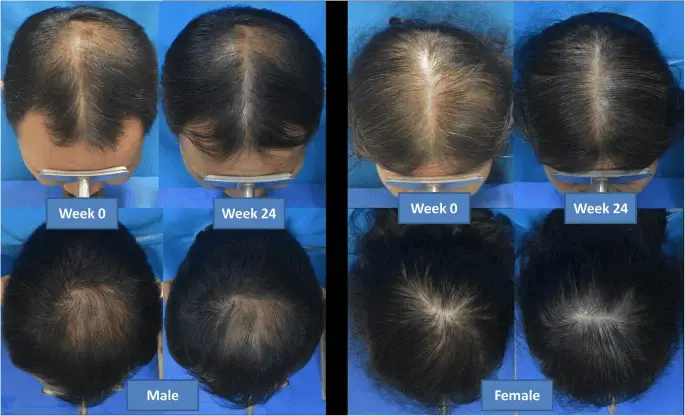
Hair transplants are the most prominent surgical procedures for treating male pattern baldness.
So, I will start by addressing your alternatives in this category:
1- Laser therapy / Low-level laser treatment (LLLT)
Unlike its recent invention, laser caps, the technology behind the laser therapy technique has an extensive background. Low-level laser therapy (LLLT) first appeared in the 1960s, thanks to the Hungarian physician Endre Mester. As a test, Dr. Mester projected low-level lasers on shaved mice. Then, he noticed that these test subjects showed much faster hair growth with laser projection than those without it. Lastly, in 2007 low-level laser therapy gained approval as a safe treatment for pattern balding. Since then, this method has been adopted by many clinics due to its effectiveness in promoting hair growth.
Due to their effectiveness, traditional laser therapies are more costly than many other hair loss options. They are also safer since they do not directly engage with the patient’s body. For LLLT to work, it requires the constant attention of several weekly sessions for an extended period.
Still, many patients see this option as viable despite its cost and the long time required to show results because it is very effective in battling hair loss and shows no significant side effects, according to studies.
2- Laser Caps
Sometimes, patients prefer an option with less contact, which does not contain a chemical or a needle. Laser caps are one of those options that start to shine.
With a self-explanatory name, laser caps are wearable caps/hats with a layer of laser diodes on their inner surface. These laser diodes work by projecting light into your scalp. Therefore, they are typically considered the home-use version of Low-level-laser therapy due to their convenience and cheaper cost.
Although the principles for how they work look like a work of science fiction, their structure is relatively straightforward and effective. Each laser diode shoots a red light containing a high amount of photons to your scalp, which is then absorbed by your cells and converted into a form of energy that supports cell regeneration and hair growth. So, it doesn’t directly promote hair growth but strengthens the cells responsible for it.
According to its most famous publisher’s website, these caps must be used for 30 minutes daily for 6 to 12 months to create sustaining results. As for their effectiveness and side effects, they contain the same pros and cons that traditional laser therapy methods have.
3- PRP Treatment
Platelet-Rich Plasma (PRP) is a type of healing technique in which a patient’s body is a part of the healing process. First, a low amount of the patient’s blood is drawn from their body, and then the platelets in their blood are separated to be later injected into their scalp.
In other words, this treatment does not contain any external source of chemicals to be injected.
Although this treatment has only started being used for treating hair loss in the last two decades, its history goes back to the 1970s. In its early times, this medication was used by hematologists to treat blood disorders. However, when orthopedists started using PRP’s healing and growth factors for treating sports injuries in athletes, it attracted the media’s attention to become more widespread. The most obvious proof of PRP’s effectiveness was the improved recovery time in well-known athletes of the time, which led to the beginning of studies about it.
Existing studies show promising progress in the PRP treatment’s effectiveness for treating hair loss. However, the downside of this method is that an expert dermatologist is needed for the surgery’s long injection process. And although this is an FDA-approved method, it too comes with specific side effects such as pain, bleeding and burning around the injected area, scalp numbness, and infections.
That is why we suggest that every patient considering a PRP treatment should consult with a clinic that has an expert dermatologist on their staff.
Medications
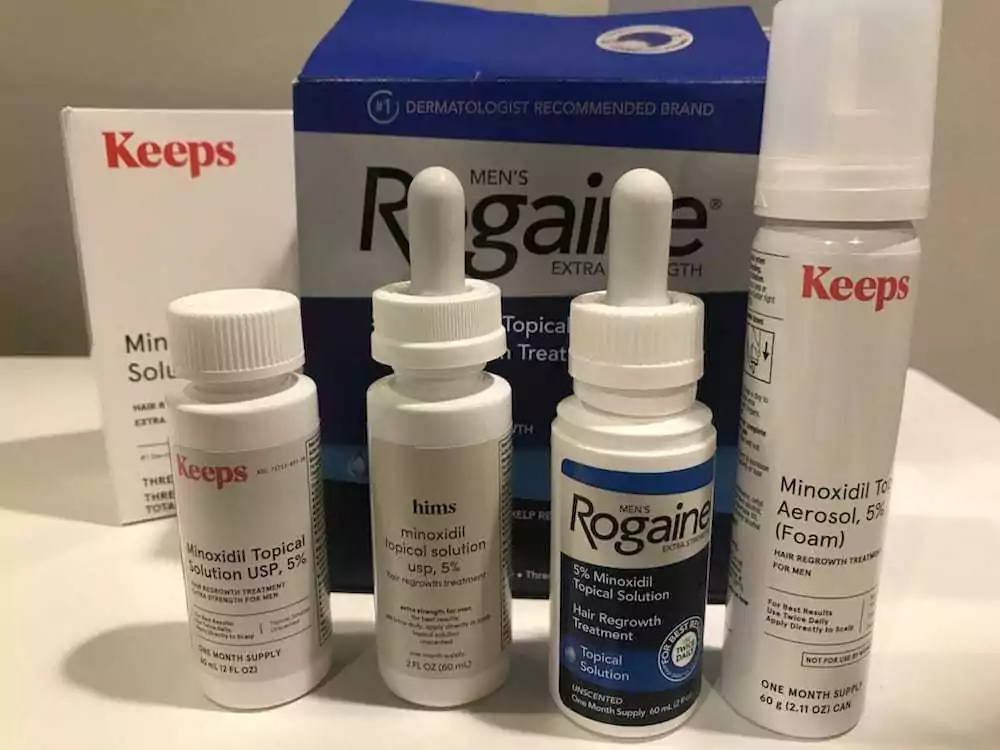
Aside from surgeries, topical solutions in pills also create promising results in continuous use.
So, I will also go through all your alternatives that are usable medications:
4- Minoxidil
Minoxidil is one of the most famous and prominent alternative medications we have today for hair transplants. Like many other medications in this list, you can also use this medication with or without a hair transplant.
Usually appearing under the brand name Rogaine, Minoxidil is a popular FDA-approved medication for treating male pattern baldness. After being invented in the 1960s by Upjohn, it found its way to the markets as a hair loss medication in 1979 by Dr. Guinter Kahn. And now, it is an easily accessible over-the-counter topical medication.
The use of this medication can appear in three different versions:
- It can be an oral medication you can get with a prescription.
- It can be a topical foam for easy application on your scalp.
- Or lastly, it can be a topical liquid solution.
For best results, we suggest you use the topical liquid solution to apply half a cap to your scalp twice a day.
However, the principle behind Minoxidil’s effectiveness in dealing with hair loss stays the same. It boosts hair growth by increasing the blood flow to your scalp, which results in thicker hair and healthier follicles. So, it does not grow new hair follicles; it simply increases the amount of blood flow to your scalp, positively affecting your hair’s health. But beware, Minoxidil is not a one-time solution, meaning that you will have to continue using it to maintain its benefits, and those effects will not appear after a single night. As for its effectiveness, a study shows that 62% of the 984 men using Rogaine Minoxidil report a reduction in hair loss.
❗This medication does not come without some possible side effects. The most common ones include scalp sensitivity, skin dryness, irritation around the application site, and increased heart rate.
5- Finasteride
As an FDA-approved supplement medication for MPB, Finasteride is one of the most prominent alternative medications to hair transplants. Usually appearing under its brand name Propecia, it is a topical oral medication you can get with your doctor’s prescription.
Finasteride is an inhibitor drug that slows down or reverts hair loss by preventing the production of the hair loss hormone DHT. Its effectiveness in this process is incredibly high, as studies show that it has a rate of showing hair growth in 66% of patients and altogether preventing further hair loss in 83% of patients.
The downsides of this medication are that it is not a one-time solution, but more importantly, it has some side effects. Although they are scarce, temporary, and curable, they still raise concerns. These side effects include rash, erectile dysfunction, and ejaculation disorder.
6- Saw Palmetto
Saw palmetto is the most recent alternative method we have today for treating hair loss. Although Saw palmetto berries have been used in American folk medicine for several hundred years to treat prostate problems, their history in treating hair loss and becoming a registered medication is pretty new. It appears on our list because of the discoveries made since the 1900s about its effectiveness in treating MPB.
The name of this medication belongs to its main natural ingredient, a flowering plant called saw palmetto. Saw palmetto plant works by blocking the conversion of testosterone into the DHT hormone (dihydrotestosterone, the primary hormone responsible for hair loss), similar to inhibitor medications.
Similarly, this method must be used continuously for a long time to show and maintain its benefits. And, as this medication is more pure and natural in its form, modern studies show little to no side effects whatsoever while demonstrating its effectiveness.
Aside from taking it as a topical medication, you can also consume this plant in tea. However, this is where its downsides begin to appear. Since saw palmetto is a very pure form of hair loss medication, its required dosage is incredibly high. Whether it is a food supplement or not, around 200 mg of its dose must be used several times a day.
As for its effectiveness, studies show that 38% of patients who took 320 mg of saw palmetto every day for two years showed improvement in their hair loss.
7- Prostaglandin
Prostaglandin is a new, clinically proven method that takes its name from the molecules used in the process.
Prostaglandins are naturally occurring molecules found in almost every cell in our bodies, and they can affect many conditions, including hair loss. They are produced by the adipose tissues, the same cells responsible for creating new hairs. In other words, prostaglandins work by boosting your body to make more, better, and thicker hair.
These medications typically come in an injection form, where they are first injected into your scalp before being absorbed into your bloodstream. They then cause your body to start producing more of the beneficial prostaglandin cells naturally through enzymes, boosting your body’s existing production cycle.
Studies about its effectiveness show that this medication dramatically speeds up the regeneration process of hair follicles, which in turn causes your hair to grow faster. But its efficacy falls behind many other remedies on this list.
8- Viviscal
Unlike its alternatives for treating hair loss in medical terms, Viviscal works without directly interacting with your DHT hormones. That is precisely why this drug is called a dietary supplement for hair growth.
The way it works is by supporting your existing hair with nutritious proteins. Typically, your hair constantly renews itself over time by dropping your old hair and regrowing new it. When Viviscal comes into play, it brings rich amounts of protein into your strands, encouraging new ones to grow.
As seen in multiple studies that are even accessible on its website, Viviscal is an excellent tool for hair loss, especially if an increase in hair diameter and thickness is the primary objective. Although it cannot get approval from the FDA for not being a drug, its clinically proven factors make this medication “fitting” for the FDA requirements.
This medication comes in the form of either a liquid or a powder. And as the former version contains many high-quality ingredients, we heavily suggest getting the liquid version to get the most benefit possible from this method.
The usual reason that some patients prefer not to choose this method is that it is still not approved by big medical institutions such as the FDA.
9- Procapil
Continuing from the list of medications that contain natural ingredients, Procapil is another noteworthy example. It is a unique mixture of various natural ingredients in a single medicine specially produced to help with hair loss.
This medication is another inhibition drug as it blocks the production of the DHT hormone to stop hair loss. As for its usage, this medication appears in two different forms: Either as a topical solution for male pattern baldness or as an oral that you can take daily, which will require your continuous dedication.
As for its effectiveness, a study shows that the objective success rate for preventing hair loss and subjective satisfaction rate from patients was much higher than other medications such as Minoxidil (by almost two times).
The downside is, Procapil’s potential side effects are much more striking in comparison. These side effects include nausea, vomiting, stomach upset, rash/itching, or headache.
Natural Alternatives to Hair Transplants

Hair transplants have many alternatives with different benefits and downsides. However, all the methods I have gone through are medical options, such as surgical or drugs. In other words, they contain chemicals modified in a lab.
Combined with their potential specific side effects, regardless of how rare they might seem, some patients see these methods as no different than hair transplants and instead look for natural alternatives.
So, here are your best natural alternatives for hair transplants that are proven to work and are approved by clinics for continuous usage:
10- Peppermint Oil
⚠️ One thing we should mention first is that peppermint oil, like many other natural alternative methods in this list, may trigger your sensitivity or allergy to the medication (due to the vast number of acids in it) if you have one. As always, our motto is that you should advise your doctor about your medical history beforehand.
Peppermint oil is a potent oil extract that works similarly to medications such as minoxidil. It increases the overall blood flow to your scalp, which in turn causes more oxygen and nutrients to reach your hair follicles. So, its process not only has entirely natural ingredients but is also natural in its process of helping stop hair loss.
According to studies, despite needing a high amount to be consumed to show visible progress, this method is almost as highly effective as topical oral medications.
💡 The last thing to remember about this medication (and every other one in this final part of the list as natural remedies) is that due to its less chemically-enhanced background, its effectivity is less than other medical alternatives.
11- Aloe Vera
According to studies, aloe vera is a plant with many beneficial acids, enzymes, minerals, and vitamins that can positively affect your hair’s health.
The beneficial compounds in Aloe Vera bring out this natural medication’s effectiveness in two ways:
1️⃣ The first is that vitamins and acids feed your scalp to enhance your hair’s health for regrowing faster, thicker, and more resistant.
2️⃣ The second is that other ingredients, such as enzymes and minerals, help you by preventing you from having an oily scalp and reducing the inflammation in your scalp. These are known reasons for slowing down and obstructing hair loss.
Due to these active ingredients, this natural remedy has been a trusted option for hundreds of years. To explain how to use it, you can apply aloe vera gel directly on your scalp by massaging it gently twice a day for about 10 minutes.
12- Avocado Oil
Many famous and trusted natural remedies for hair loss are natural oils. Because usually, their rich ingredients contain a high amount of effective compounds, enough to gather the attention of researchers. And most of the time, they are applied with the support of scalp massages, which also heavily promote your hair growth.
This method’s history of trusted use goes back to the Aztecs’ time for promoting hair growth and preventing hair loss. That is because Avocado oil is rich in vitamins such as A, B1, B2, D, and E. All these vitamins greatly help your body nourish your hair’s roots.
It also contains a good amount of very beneficial acids, biotin, and antioxidants. These are excellent sources for strengthening your follicles’ health and reducing hair loss.
To benefit from its positive effects, you can apply half a teaspoon of Avocado oil directly on your scalp three times a week before washing it off with shampoo after approximately 10 minutes. Recent studies also show that aside from treating the setbacks of natural hair loss, this method is also helpful in treating damage to your hair caused by outside sources.
13- Geranium Oil
Geranium oil is another home remedy used for many decades to stimulate hair growth in balding patients. However, its clinically proven background is pretty new.
Despite that, these studies still show successful results.
According to a study made in 2017, its effectiveness at significantly enhancing hair regrowth and preventing hair loss is comparable to that of Minoxidil.
This medication regulates the amount of dryness on your scalp and around your hair follicles by using its beneficial chemical compounds. Therefore, using them regularly allows your hair follicles to work healthier.
To benefit from it, you can apply Geranium oil directly on your scalp 3 or 4 times a week for about 5 minutes before washing it off with shampoo.
14- Rosemary Oil
The oil in this herb is a widespread, universally known beneficial remedy that has been used for many different conditions over the years, including MPB.
This remedy’s beneficial effects come from affecting the insides of your scalp.
By using the ingredients in it, such as specific acidic chemicals like Carnosic acid, Rosemary oil increases the blood flow around your head. As a result, your hair follicles get more oxygen and nutrients pumped into them. And when your hair follicles absorb more nutrients from your bloodstream into their cells, your hair starts growing healthier.
Aside from taking the established place of Rosemary essential oil in different cultures worldwide as evidence, it also has clinical studies showing its effectiveness.
According to a study, Rosemary oil was as effective as Minoxidil in treating hair loss. In this research group, the rate of increase in hair count was the same for both groups using Minoxidil and Rosemary oil at the end of the study.
More importantly, in contrast to and unlike Minoxidil, Rosemary oil has almost no side effects, such as scalp sensitivities or irritations.
You can apply this remedy on your scalp 3 to 4 times a week for about 10 minutes after showering.
15- Fatty Acids
The most recognizable mutual part of natural remedies for hair loss is that the working principle for almost all of them is strengthening your hair follicles or scalp to increase their health, reflecting positively on your hair growth.
And when we talk about nutritious natural medications for hair growth, the most irreplaceable and important one is, without a doubt, fatty acids.
Fatty acids usually refer to two essential nutrients: Omega-3 (found in fish) and Omega-6 (found in most nuts, seeds, and oils like sunflower or canola). Both of these acids are proven to help induce hair growth by studies showing that fatty acids increase hair density in patients by 62%.
These beneficial nutrients create a protective barrier on your scalp’s skin and prevent dryness or itchiness. As a result, your hair follicles get the chance to work healthier without being affected by outside resources or harmful chemicals such as DHT.
You can gain the benefits of fatty acids in different ways:
- You can apply them on your scalp 3 to 5 times a week for about 10 minutes.
- You can eat them rather than putting them on your scalp, which allows your body to absorb these nutrients better. So, you can instead take fatty acid supplements such as daily capsules to benefit from these as much as possible.
16- Onion Extract
⚠️ Reminder that raw onion juice is very acidic and can harm your scalp and hair. Therefore, we suggest you use products such as shampoo that contain this natural ingredient instead.
Thanks to its easy access and practical use, onion extract has been among the most used natural methods for treating hair loss since ancient times. It is a reliable remedy because onion contains many good properties that directly affect your hair’s health, such as amino acids, vitamins, enzymes, magnesium, and even Keratin. By starting with Keratin, all these ingredients are so effective that they have their products, and onion extract contains them all at once under its juice which heavily promotes hair growth, as supported by studies.
Although studies show that onion extract thoroughly supports hair density and increases hair growth, using it directly on your scalp (instead of consuming it) is heavily dangerous and harmful due to its acidic nature. Therefore, we suggest certain products, such as onion extract-containing shampoo. According to a study, this shampoo product nourishes hair follicles, promotes hair growth, and prevents dryness by moisturizing the scalp.
If you plan on using this shampoo, the same study suggests applying it to your scalp and keeping it there for 5 minutes before washing it off for the best results.
17- Scalp Massages
Scalp massages are one of the most popular and proven methods to stimulate hair regrowth.
In support of your hair’s regrowth, this remedy increases your scalp’s health in two ways:
- Scalp massages stretch the cells of hair follicles and make them thicker, resulting in thicker hair produced from your hair follicles. According to a study, doing scalp massages for 4 minutes per day for 24 weeks increases hair thickness by %10.
- Applying scalp massages improves the overall blood circulation throughout your scalp, boosting your hair growth. A study showed that hair loss stabilization and increased regrowth were reported in 69% of 340 patients who have done scalp massages of 10 to 20 minutes twice a day for six months.
This method is quite simple; you can gently massage your scalp using a massage brush or your hands. Applying light pressure to the skin for 5 to 10 minutes per day should be enough. Just make sure that you thoroughly wash your hair, hands, or brush beforehand.
18- Better lifestyle habits
In the daily life of our modern era, our lives are so crowded with responsibilities and constant rushing that we hardly show any effort to spare time for a proper diet and exercise. Consequently, we look for shortcuts such as pills, medications, and natural remedies that we can take on the go.
So, when we take these into notice, the most natural and impactful alternative for any clinical medication is ensuring that you never need them by maintaining a stress-free lifestyle with a balanced diet and a proper exercise routine. Therefore, we suggest you consider the benefits of diet and exercise.
➡️ Avoiding nutrition deficiencies or extreme levels that create toxicity and trigger hair loss are among the few obvious benefits. In 21st-century medicine, the Mediterranean diet is one effective technique we advise our patients. According to a study, it consists of high proteins, raw vegetables, and fresh herbs, which highly contribute to its effectiveness in reducing the risk of hair loss. With this diet, you should try to consume raw vegetables and fresh herbs at least three times a week to see the results of this diet.
➡️ The most apparent benefit of exercising is avoiding low blood circulation in your scalp. Movement and stimulation with exercise increase the amount of blood circulation in your scalp, which turns into more oxygen and nutrition flow going to your hair follicles. Besides, physical stress with exercise can significantly reduce mental stress by giving your body a chance to release tension.
➡️ Speaking of stress, you can avoid it with an orderly lifestyle. According to a study, researchers have found a direct link between hair loss and stress levels, as high amounts of continuous pressure from non-released stress increase hair loss.
We know that it is not easy to make changes in a single day. Therefore, we suggest making small changes over time. When you see the benefits appearing over time, you can continue making minor changes to maintain this lifestyle.
The Best Alternative to an Average Hair Transplant Is…
There are various alternatives for ensuring that your hair has a great-looking future.
However, the best possible and permanently ensuring alternative is a perfect hair transplant powered by the latest techniques, leading technology, and equipment, bio-enhancements, all at the hands of a dermatologist surgeon.
Conveniently, that is entirely available at UnitedCare.
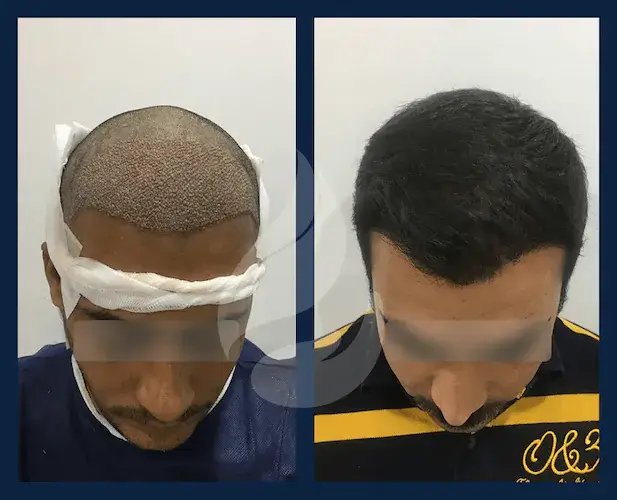
At UnitedCare, we first begin our treatment process by offering you a one-on-one consultation with our expert doctors and dermatologists to find the best-suited option together. We suggest you mix the latest technologies with the most prominent medications for better results.
After you have decided on a method, we begin the treatment with the utmost attention. But most importantly, we stay in contact with our patients even long after the treatment has already finished ensuring that the benefits of the medication stay intact.
Regardless of which method you choose, one policy in our clinic stays the same. We value creating a balance between your comfort and your health.
Ready to begin the journey? Click here to start the first step:
A Hair Transplant that will last you a lifetime:
Restore your natural look with UnitedCare‘s expert dermatologists.
Frequently Asked Questions (FAQs)
What is the most common alternative to hair transplants?
Among the most common alternatives to hair transplants, there is Finasteride, Minoxidil, PRP injections, laser caps, and LLLT. These are mostly surgical therapies or continuous medication for stopping hair loss. There are also natural alternatives for patients who want an approach without the touch of a knife or a pill. These natural alternatives include rosemary oil, geranium oil, and aloe vera. However, almost all of these options are alternatives for stopping the progression of hair loss. Only hair transplant surgeries are a permanent solution to complete baldness.
Is it possible to regrow hair without a hair transplant?
No, not if there is a complete loss of hair follicles in the balding area. Almost all the alternatives to hair transplants fight hair loss by reversing the balding in your scalp. In other words, they need some amount of existing hair and hair follicles to erase balding by helping your scalp regrow your hair. But in the case of complete baldness, as no hair follicles are left in the area, only hair transplants become a possible solution to regrow hair. Because they work by transplanting new hair follicles from other parts of your head.
What’s the best non-surgical hair loss treatment?
In terms of medical pills, Finasteride and Minoxidil are the two most effective and FDA-approved treatments for battling hair loss. These prominent options are followed by new options that lately have gained attention, such as saw palmetto. And as for the patients who would prefer a more natural approach, onion extract, scalp massages, and fatty acids are promising methods for supporting your body.
